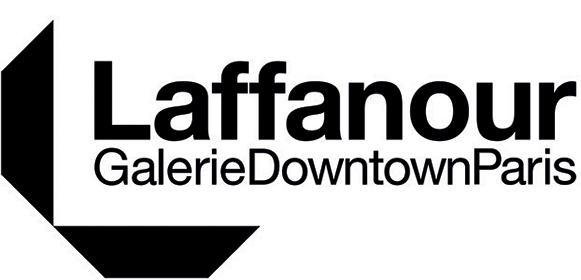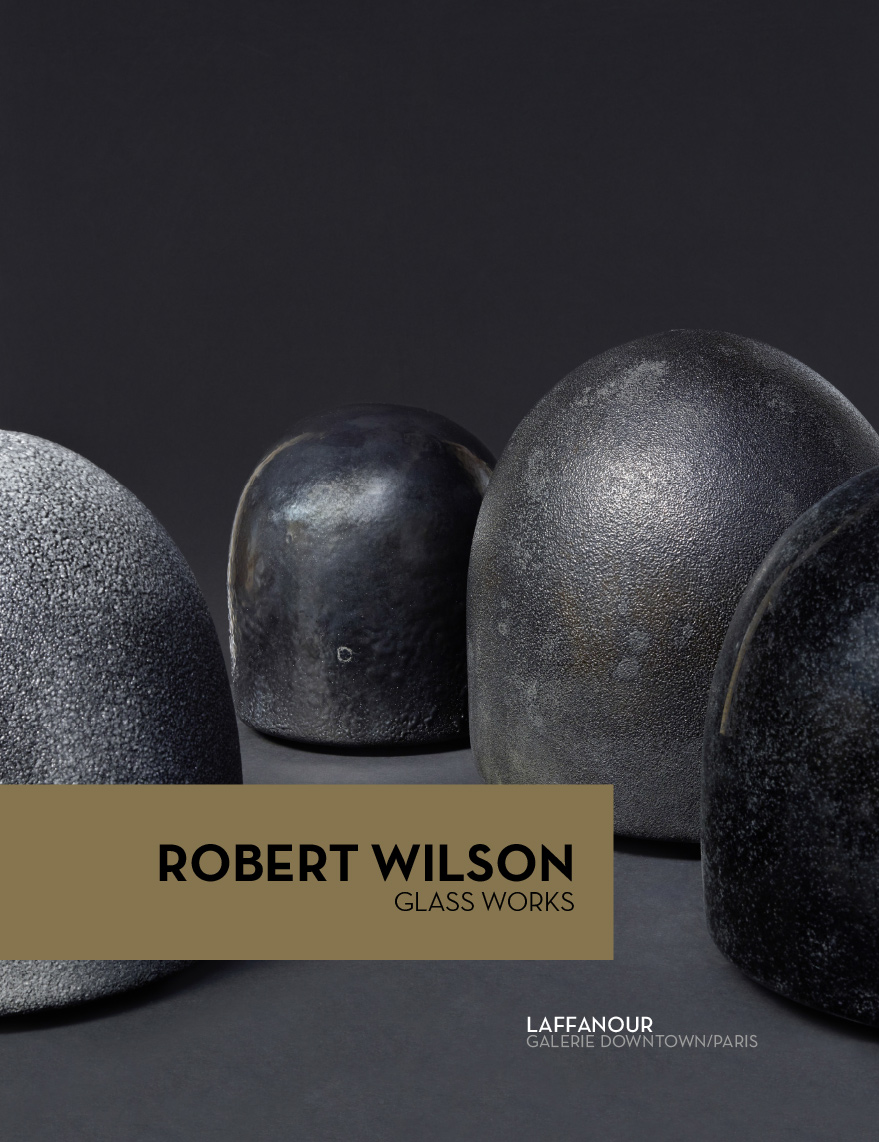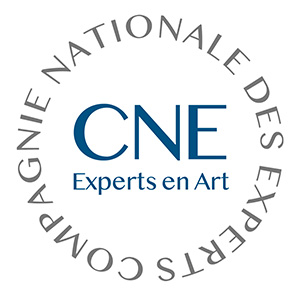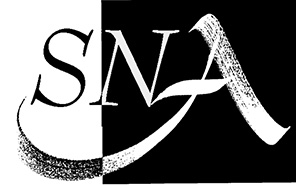By Françoise Guichon
Robert Wilson is passionate about glass…, keen to try his hand at it… This is what a message from Paula Cooper, whom I’d contacted about another project, told me in 1994.
Robert Wilson occupies a topmost rung in the pantheon of artists who, in the early 1970s, changed the way a whole generation in France looked at things, and well beyond theatre, to boot. Together with Trisha Brown, he was one of the first influential contacts we had with the American avant-garde.
In Nancy, in 1971, at the invitation of Jack Lang (at that time director of the Nancy University Theatre, and a decade later President Mitterrand’s Minister of Culture), he created “Le Regard du Sourd” [“Deafman Glance”], a seven-hour show that was presented in Paris some months later. As far as I am concerned, it was in Annemasse, in 1974, that I discovered Robert Wilson with his “Letter to Queen Victoria”. That was two years after the 1972 Documenta 5. The intellectual and emotional impact felt in Kassel found something akin to a mysterious and fascinating inner resonance in the dreamlike dimension of time and space peculiar to his world. In 1976, Avignon was the stage for the bedazzlement of “Einstein on the Beach”, and since then, right up to the present day, so many unforgettable works have been forever taking people and audiences by surprise, precisely where we thought we already knew everything there was to know, just like with an old friend. Because if Bob Wilson is the pastmaster of the simplest of structures, he is also peerless when it comes to the variations and infinite nuances that can be brought to them, the subtle marriage of opposites and reversals, which we shall see in his work with glass.
When I learnt that Bob Wilson was interested in glass, to the point of wanting to grapple with it, I was greatly surprised, and I hastened to tell him that, whatever he wanted to do, and even if he had no idea what he wanted to do, the CIRVA [International Centre for Glass and Plastic Arts Research] would be delighted to be unconditionally at his beck and call. For more than ten years, from 1994 to 2005, he assiduously attended the workshop, as much as his ceaseless travels all over the world allowed him, for a day or two, or a weekend, and sometimes almost a whole week—and his visits happened once or twice a year. All the pieces were produced in his presence and if they were removed from the furnace after he had left, without having had a chance to see them, he would discover them when he returned, and take charge of their finish down to the last detail, including the cutting, the polishing and the surface treatment. Last of all, when they could all be brought together, he examined them at great length before deciding whether to hang on to them or not.
Before he went to Marseille, he had had a chance to see Lino Tagliapietra at work—the most famous of the master glassmakers and artists hailing from Murano. Bob Wilson admired his extraordinary virtuosity, and appreciated the lightness and tension of the shapes he created, which are nowadays copied without so much as a by-your-leave, as if they have forever been part and parcel of the legacy of Murano. The precision of Lino’s gestures and movements, combined with an extreme concentration, so impressed Bob Wilson that at times he enjoyed copying him, thus, in a flash, letting his interlocutor know precisely that he was in cahoots with the maestro.
In those days, Lino Tagliapietra went regularly to work at the CIRVA. For our small team, as for guest artists, his collaboration was a huge pleasure and an infinitely precious form of support.
Bob Wilson’s early work sessions thus saw the meeting, filled with mutual respect, of two “superstars” coming from spheres apparently well removed from one another. Bob would set up his sketchboard opposite the furnaces—Lino’s realm. Armed with thick coloured pastels, he drew vases or, more exactly, whirlwinds of lines which, around an invisible axis, focused the energy of spirals which all converged in the end.
For Bob Wilson, dance lies at the heart of the living world, and of his own work. In observing Lino’s movements, and those of his assistants, with their endless toings and froings from furnace to workbench, creating something akin to an invisible arabesque on the floor, with the motions of the blowpipe swaying in space, raised and then lowered before being returned to the hands of the maestro sitting at his blower’s bench so that he could horizontally turn the glass gob or parison, the gestures—incomprehensible for any layman—of his hand swaddled in wet paper, or extended by wooden and metal tools, the moments of waiting and motionlessness suddenly broken by the extreme briskness of the pace of things, the repetition of the same gestures, in a word, everything in that balletic dance prompted Bob Wilson to appropriate for himself that unknown matter, through gesture and movement.
With his first drawings, vortices of lines creating a form all of its own, he probably thought he could transcribe the energy emanating from that grand mechanics straight into the matter. He did not gauge the fact that each one of those precise gestures was incorporated with the same precision in the matter, with no room whatsoever being left for spontaneity. In those early days, he did not realize that to introduce freedom into that thoroughly well-ordered process was the most improbable thing that anyone might envisage doing, and bringing off. The share of freedom authorized by blown glass is confined to intrusions of detail and décor. Introducing dissymmetry, precisely where symmetry reigns, and destabilizing the integrity of a shape, which everything is striving to take to its perfection, calls for great troves of wiliness and inventiveness.
Bob Wilson was disappointed by the results. The way the glass was rolled had lost all spontaneity, its movement was strained and had become clumsy, and from the accumulation of lines there came into being the idea of a confusion, and not the expected burst of energy.
He abandoned his initial approach, realizing that the rules dictated by the matter and the craft had to be accepted for what they were. To get where he wanted to go, he would have to either harness those rules, or bypass them. This is what came to pass when, later on, with his “concept no7”, he found a thoroughly Wilsonian solution to his initial project.
He asked the glassblower to roll a broad ribbon, and no longer a thin thread of glass, around a hollow cylinder, and then crush it, by making it roll over a metal sheet, in order to fit this wild rolling into the perfect blueprint of a larger cylinder. The tension between the freedom of the gesture and strict geometry was there, in its maximum state.
Meanwhile, because of that first fruitless attempt, Bob Wilson had learnt what the essence of glass-working was: the shaping of molten matter, drawn from a crucible or pot at the end of a blowpipe or blowing iron, white-hot, moving and unstable, which, in just a few seconds, becomes frozen in a definitive and immoveable form. Thus initiated, he was free to explore, with that new medium, and thus in new forms, the invariants of his work: basic tension between motion and motionlessness, between what is transformed and what remains the same, between light and shade. With glass, he had found a sister matter.
He no longer made large drawings, and he put away his coloured pastels. Small sketches would suggest the desired shape to the glassblower, a pencil line, most carefully smudged with the finger, specified its volume, and the kind of surface it would have, but above all the spirit towards which the craftsman should focus.
This is what Bob Wilson wrote a year ago, when I was asking him, at a very late hour, about his attachment to ceramics and glass:
“I like ceramics because I think it must be beautiful to work with clay and earth in one’s hands, but I much prefer glass. The heaviness and the lightness can be extreme. I like the strictness of the curved line as it is seen in geometry.
There are only 2 lines: curved and straight. That is a part of classical construction: buildings/trees, protagonist/antagonist. Time for me is a line that goes from the center of the earth to the heavens. Space is a horizontal line. This cross is the basic architecture of everything. It is the stripe of Barnett Newman, a piano key being played, the drip of milk in a Vermeer painting, or Jesus Christ on a cross. Robert Mapplethorpe’s photographs are based on the vertical and the horizontal, or a triangle that can be drawn from the top center to the edges of the bottom.”
Each and every one of the 77 vases blown at the CIRVA, like the cast pieces designed to be set on the floor, was the expression of this idea which conveyed what connects Bob Wilson so powerfully to this matter.
Piece after piece, he explored the variations of the principles declared in those few lines, and organized them, after the fact, in families and “concepts” which he numbered without sticking to the chronology of the order in which they appeared. This is actually a conceptual and perceptible oeuvre, and as such a fully-fledged part of his world—and one which he produced with glass during the ten years when he went to work at the CIRVA.
Curve and straight line are there, in all the vases made of blown glass and in all the floor pieces made with cast and solid glass. The curve is developed in the verticality and turned into a straight line horizontally, at the top where the former are concerned, and, conversely, at the base where the latter are concerned. The shift between horizontal and vertical is enacted in different ways depending on the concepts involved. The curve in concept no6, developed with a very fine glass by Lino Tagliapietra, is turned into a straight line in the vertical axis before turning at right angles around a very small opening, a feat of expertise, though there is nothing to suggest as much. Elsewhere, the shrewd simplicity of the curve, more or less round or oval, is gently upset when turned around by hand, or abruptly interrupted when the top of the vase is cut by a saw and reveals on its edge the degree of its thickness.
Glass, as we are reminded by Bob Wilson, may be equally thick or thin. Each one of his pieces explores this bivalence which might seem to be an almost insignificant datum, were it not that so many other properties depended on it.
This is the case with one piece which Bob Wilson does not talk about. Perhaps he is so familiar with it, and perhaps it so deeply fashions his conception of space, that he forgets to mention it? This property of glass, which makes it so close to his world, is the capacity it has to simultaneously transmit and reflect light, and be transparent or opaque. Nor does he mention another capacity linked with the above, that of diffusing colour while partly holding it back, and thus creating effects which only the union of sky and water can offer a fleeting equivalence of, in nature.
Every vase is the expression of a particular moment of light. The first ones, fine and large, are without any added colour, and their surface has been lightly satin-finished by hand, as if caressed by light condensation. Elsewhere we might see the reflections of dawn on a pond, a light fog, the opal halo of the moon, all the states of light offered by sky and water, ad infinitum. The solid matter of the cast floor pieces, still marked by the sand of their moulds sometimes filled with oxides, will conjure up the highlights and dazzles of metal or celestial bodies. How is it possible not to also think of the light contained in the water of stones and pearls, but also of the forms of light of Bob Wilson’s shows, the way they have made their way into our imagination, the golden lights of El Galigo, the bluish lights of Black Rider, the grey ones of Dream Play, and the slightly mauve light of Lulu. The importance that Bob Wilson attaches to the lighting of his productions, leading him to sublime innovations, much envied and poorly copied, but recognizable among all the rest, here lies at the heart of his pieces.
At first glance, the pieces produced at the CIRVA by Bob Wilson may seem commonplace. For some, they may call to mind the clever subtleties of Laura de Santillana’s colours—he has some of her works in his collection–, for others, they may conjure up the refinement and tension of Lina Tagliapietra’s lines—several of whose works he also owns–, and for others still they seem to be a tribute to František Wizner, whom Bob was keen to visit in his remote retreat, in the heart of Slovakia. The immaterial light radiating from the pieces made by that mystic of glass could not fail to deeply touch him.
At this juncture, we should make mention of the importance represented for Bob Wilson by the fact of collecting, acquiring, and surrounding himself with objects very specifically desired by him. These art objects, everyday objects and images are, for him, an essential and vital stuff, an emotional and personal resource, and a source of reflection for his own work. He appropriates them with both respect and eagerness, in order to identify, in other forms, his conception of space, and also enhance it. Rediscovering the explicit presence and more lurking trace of these objects in his oeuvre is something quite natural, and we are well removed from a mere “warehouse of props”. When Bob Wilson chooses an object, presents it on stage during rehearsals, and draws inspiration from its geometry, its construction plan, and one of the aspects of its appearance, this, for him, is a way of recognizing and celebrating it. The use he makes of it establishes a deep-seated connivance, beyond time and space, and the diversity of cultures, between him and the artists and craftsmen who have created them.
Robert Wilson’s glass objects do indeed carry on a discreet dialogue with his predecessors and with ancestral areas of know-how, but it is above all with himself that, through them, he sets up a discussion, with his sensibility and with his conception of the representational space. They are like a whispered secret about the essence of his quest.
In the wake of Lino Tagliapietra, the following glassblowers were at work at the CIRVA between 1994 and 2005 to produce Bob Wilson’s pieces: Naomi and Fumiaki Uzawa, Jeff Zimmermann, Pavel Cajthamel, and Matteo Gonet, assisted by all the CIRVA technicians.
During that period, Hanneke Fokkelman monitored all the works produced up until 2001, when Pierre Hessman took over the task.




